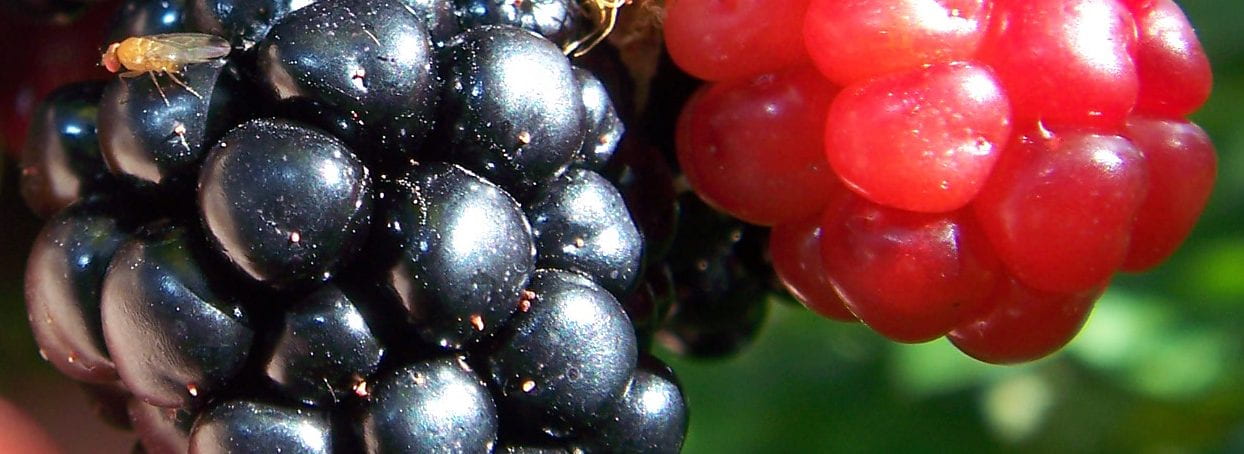Examine your caneberry plantings for conditions that promote SWD infestation and take steps to eliminate them. Although we cannot change the weather, we can alter conditions in the planting to reduce the cool, dark, humid areas preferred by SWD. Pruning and training systems can help maintain an open canopy to increase sunlight and reduce humidity. This will make plantings less attractive to SWD, will reduce SWD activity, and will improve spray penetration and coverage.

Pruning tactics for caneberries (raspberries and blackberries) have been developed to achieve excellent fruit yield and open the canopy. Knowing different pruning strategies will help you manage SWD. Added benefits include improved fruit color and flavor promoted by sunlight, easier picking by workers and customers, and easier weed management.
Caneberries (brambles) grown in the Northeast include red and black raspberries and blackberries, all are susceptible to SWD infestation. However, fruiting season differs among cultivars, which influences the risk of infestation.
- Summer bearing varieties develop berries on floricanes that grow the prior year and overwinter. Fruit ripens and is harvested in early to mid-summer, prior to SWD population buildup, lowering the risk of infestation.
- Fall bearing varieties develop berries on primocanes that grow, flower, and fruit in the same year. Fruit ripens and is harvested in late summer and early fall when SWD populations are high and risk of infestation is extreme.
- Plants developing berries on floricanes and primocanes haven’t had floricanes removed after fall fruiting. Fruit ripens and is harvested from early to mid-summer on the floricanes and from late summer to early fall on the primocanes. The risk of SWD infestation will be low early in the harvest season and will increase as the summer progresses and the SWD population builds up.
Pruning suggestions for summer bearing varieties
Summer raspberries – maintain 4-5 healthy floricanes per foot of row.
Blackberries – maintain 3-4 healthy floricanes per foot of row.
Black raspberries – maintain 6-8 floricanes per hill.
Everbearing – maintain 4 primocanes and 4 floricanes per foot of row.
Floricanes should be held upright with a trellis to facilitate spray coverage and air circulation. Holding fruiting canes to the outside on a V-trellis will keep them to the outside of the growing primocanes and facilitate spray coverage and harvest.
Prune out the smallest primocanes beginning when they are 12 to 18 inches high to select and keep the biggest and best canes. Keep a few more than the suggested cane density per foot of row or per hill. Begin removing spent floricanes in July along with any late emerging primocanes. In November, laterals on black raspberry and blackberry primocanes can be cut back to 3 or 4 buds.
Pruning suggestions for fall bearing varieties
Maintain 4-6 primocanes per plant on a trellis.
Encourage early fruiting by placing row covers over the row after mowing in the spring. Remove the row covers when the primocanes are 18 inches tall. This will bring on flowering about two weeks early and help avoid or minimize SWD damage.
References
Nourse, N. 2015. Raspberry pruning timeline. Nourse News. Spring:2-3. http://noursefarms.com/resources/newsletters/spring_2015.pdf
Pritts, M. 2013. Horticultural strategies for living with SWD. New York Berry News 12(10):1-2. http://www.hort.cornell.edu/fruit/nybn/newslettpdfs/2013/nybn1210.pdf

